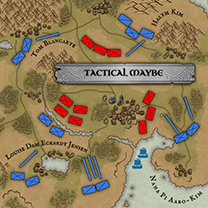June 27, 2022
Tactical Maybe - Tactical Maybe
 Label: Barefoot Records
Label: Barefoot Records
Catalog #: BFREC075CD
Country: Denmark
Release Date: June 24, 2022
Media: cd or digital download
bandcamp.com entry
discogs.com entry
Tactical Maybe is the eponymous debut of a quartet that is described as a pair of duos. As a whole, the quartet features two saxophonists, Louise Dam Eckardt Jensen and Nana Pi Aabo-Kim and a rhythm section of Tom Blancarte (bass) and Halym Aabo-Kim (drums). All musicians are credited with performing not only on their primary instruments but also with voice and group composition as well as additional instrumentation.
The music embraces an absence of conventional melody or recognizable rhythm. What it offers in place of these traditional elements is, of course, freedom of expression. Ordinarily, the presence of melody and rhythm provide common markers by which the music can be described. In their absence, we must rely on other means, density for example. The music is dense. However, we are inclined to say something more.
To find our footing, we turn to the title of the ensemble and the ten tracks themselves. Tactical Maybe suggests a strategic uncertainty or ambivalence. We hear it in the music. Without (we presume) a written score, the improvisations possess a healthy dose of "maybe". Each moment that the musicians interact, they offer a particular sound to which their collaborators may respond, though the precise nature of that response is unknown. Maybe the music will turn in one direction and maybe another.
However, beyond this calculated ambiguity, there is a clear structure. We are reminded of a book, Message to Our Folks: The Art Ensemble of Chicago (University of Chicago Press, 2017) by Paul Steinbeck. In addition to the historical narrative, this book contains in depth analysis of the structure of long and short form improvisations by The Art Ensemble of Chicago. A studious ear, knowledgeable in the technical details of the instruments, the music and the musicians, Steinbeck describes the interplay of human beings via music, assigning them specific intentions that are not explicitly perceptible to our average ears without this additional insight. We lack the expertise to identify these intentions, but we intuit their presence on Tactical Maybe.
The ten track titles are taken from military maneuvers, some of them self-evident in their meaning, such as Encirclement or Occupation, and other requiring additional research, e.g. Parthian Shot and Cantabrian Circle. We rely on the Oracle of All Contemporary Knowledge to explain the Parthian Shot:
The Parthian shot is a light cavalry hit-and-run tactic made famous by the Parthians, an ancient Iranian people. While performing a real or feigned retreat at full gallop, the horse archers would turn their bodies back to shoot at the pursuing enemy. The maneuver required superb equestrian skills, since the rider's hands were occupied by his composite bow and his body was twisted around.*
Is it too literal to ascribe to the six minutes and forty seconds of the thus-titled track 3 a retreat by the rhythm section, pursuit by the reeds, a clash as a volley emerges from the retreating forces before a conclusion in which only the reeds remain upon the field of battle? We would not have arrived at this description of the music without the aid of the allegorical title.
Let's try one more example before we close, namely the Cantabrian Circle:
The Cantabrian circle was a military tactic born in the warfare in the ancient Iberian peninsula...A group of mounted javelineers and/or archers would form a single-file rotating circle. As the attackers came around to face the enemy formation, they would let their missiles fly. The effect was a continuous stream of javelins and arrows onto an enemy formation.*
The expectation that this closing track would have a continuous stream of music with a cyclic song structure was not realized. This particular implementation of the Cantabrian Circle is especially langorous and aperiodic! We suppose that the talents that led these four individuals to their particular choice of musical careers are born of dispositions that possess an imperfect overlap with traits inclined toward military prowess.
In truth, the staff of the Poison Pie Publishing House prefer music that unlocks the imagination. Hopefully, this review has provided a glimpse at the manner in which this quartet of musicians has achieved this happy end.
personnel:
- Louise Dam Eckardt Jensen (alto, baritone, soprano saxophones, flute, alto clarinet, voice, electronics) - musician's website
- Nana Pi Aabo-Kim (tenor saxophone, voice, objects) - musician's social media
- Tom Blancarte (upright bass, euphonium, voice) - musician's social media
- Halym Aabo-Kim (drums, voice)

